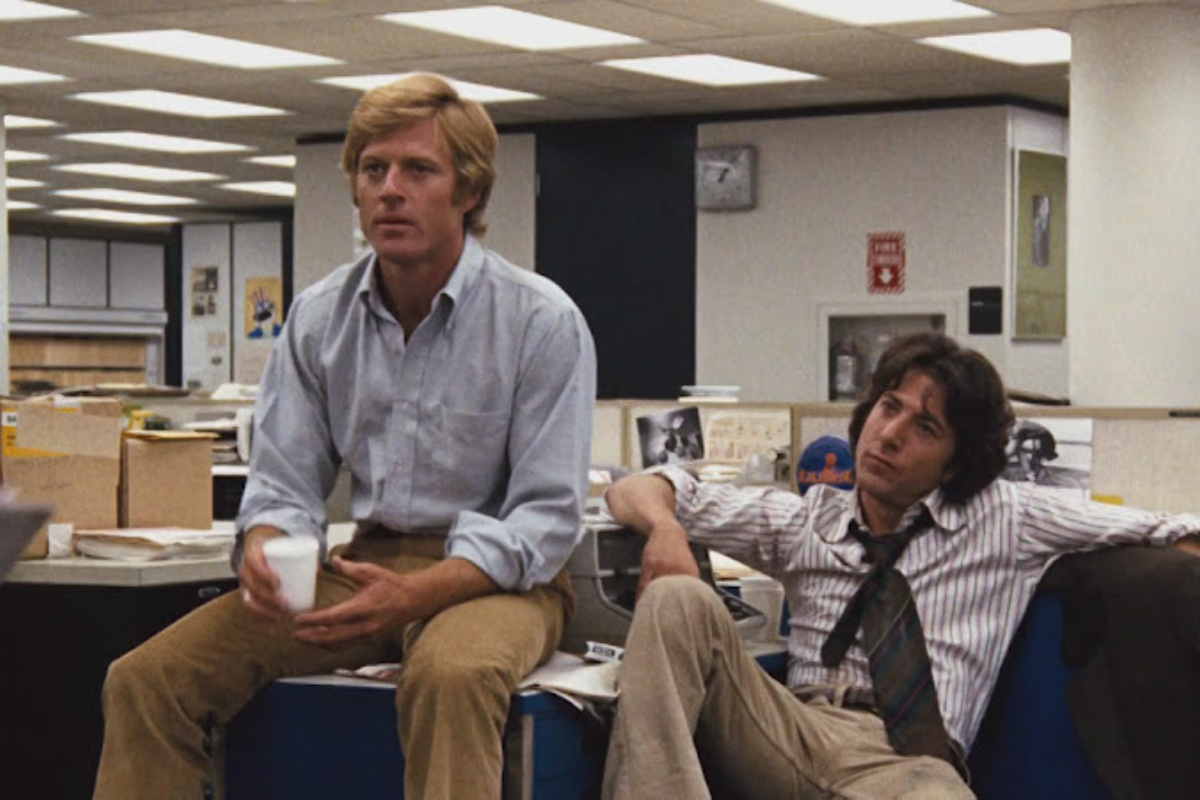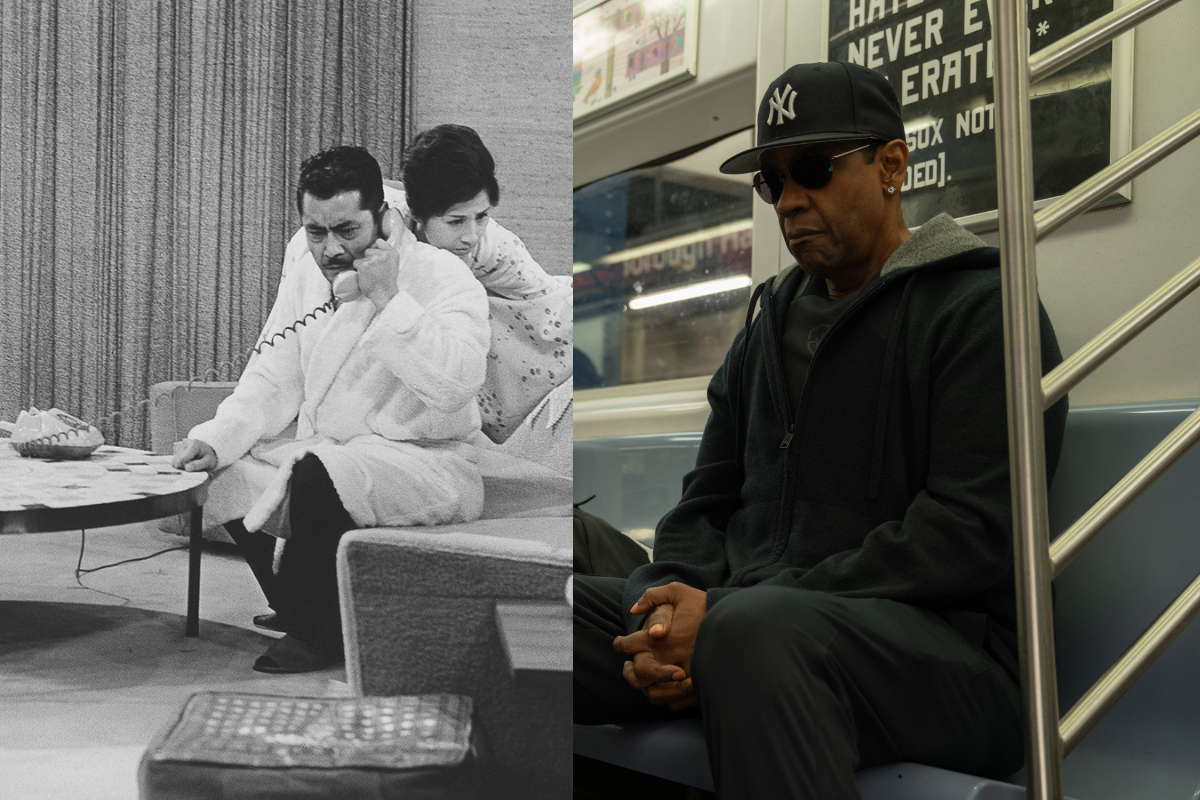UNDERSTANDING SCREENWRITING: Three Men and a Lot of Women
The guy movie is ‘The Comeback Trail,’ and the movies about women are ‘Bridget Jones: Mad About the Boy,’ ‘The Last Showgirl,’ and ‘The Substance.’
First, A Short Note.
In the last column, I mentioned that Pappa, my 25 year-old cat, seemed to have developed a crush on the Fifties B-movie queen Fay Spain. When I watched Black Gold, a 1962 movie about oil drillers, he stared at the screen for most of the film. I later showed him one of her starring features Dragstrip Girl (1957), which he had no interest in. So I tried the film with her best performance, God’s Little Acre (1958), but he did not like that, either. I think he may just have liked the oil well drilling in Black Gold. There is no accounting for taste.
I Bet This is One You Have Never Heard Of.
The Comeback Trail (2020. Screenplay by George Gallo & Josh Posner, based on the film The Comeback Trail (1982) by Harry Hurwitz. 104 minutes)
This one was shot in 2019, then released overseas in 2020 and 2021. It has never been released theatrically in the US. It appeared a few years ago on DVD, and has recently popped up streaming on Prime Video.
It stars three Oscar winners: Robert De Niro, Tommy Lee Jones, and Morgan Freeman. So what happened?
I knew a guy who was working on the film’s production in 2019 and he let me have a copy of the shooting script. The script was OK, but not great. George Gallo, who also directed the film, is best known as a screenwriter for Midnight Run (1988) and Bad Boys (1995), but they were directed by other people. The script I read seemed a bit slow (it takes a long time to set up its basic situation- not until page 47 in a 119-page script) and not that fresh. You have seen a lot better satires of the movie business than this one. I could see the possibilities in the film, particularly with that cast. So, what did happen?
The set-up may remind you of other films, most likely The Producers (1967). Max Barber is a very unsuccessful movie producer. He owes gangsters money, but convinces them to finance his new picture, a western starring aging cowboy star Duke Montana. Max figures that since Duke does his own stunts, they can set up stunts that will literally kill him, and they can collect the insurance money.
When I read the script, I knew that De Niro had been cast as Max Barber. De Niro had a substantial hit with Midnight Run, but reading the script, I kept seeing Dustin Hoffman as Max, since the character seemed exactly like his Stanley Motss in Wag the Dog (1997).
A few years after the film was completed, I saw the trailer on IMDb, and it was clear that De Niro had figured out how to make it not like Hoffman’s performance. His Max is more frantic than Hoffman’s Stanley. That gets rather exhausting over the run of the whole film. What Gallo needed to do was pull him back a bit. Not helping is that the dialogue is not as sharp as David Mamet’s dialogue for Wag.
Reggie, the gangster, is played by Morgan Freeman, who has played his share of tough guys, but here the part is only a comic version of those other parts. The comedy with Reggie comes almost exclusively from his character’s love of old movies. That running gag gets tiresome. It sounds as though Gallo has not thought through how to vary the gag like De Niro, Freeman is pushing too hard.
Tommy Lee Jones, as Duke Montana, comes off best of the three stars, although he does overdo it a bit. His best scenes, however, are not the comic ones, but his scenes with his ex-wife. Those scenes have a reality of emotion that the rest of the picture doesn’t.
Perhaps the most entertaining section of the picture is the beginning, where we get a trailer for Max’s latest film Killer Nuns, which is just what it sounds like. It is quicker and sharper than the rest of the film.
How Stupid Are the People Running Universal?
Bridget Jones: Mad About the Boy (2025. Screenplay by Helen Fielding and Dan Mazer and Abi Morgan, based on the novel by Helen Fielding. 124 minutes)
So the people who make these decisions at Universal are sitting around the office discussing the fate of this movie. The first three Bridget Jones movies did OK, but with declining results at the box office. The budget on this one was $50 million, which these days is considered middle range. And Bridget is now a middle-aged widow rather than a cute young thing, although she is still a little ditzy. And this movie is a little more emotional than the previous ones.
Women may like it, but do they go out to the movies anymore? Well, they did to Wicked: Part I, but that was based on a monster Broadway hit.
So, guys, why risk it? We’ll release it in theatres overseas, but send it straight to streaming in the United States. After all, our Peacock streaming service needs all the help it can get. OK, Peacock it is.
Bridget Jones: Mad About the Boy opened overseas, and in the first few weeks it grossed $71 million, more than the earlier three films grossed in their opening weeks.
In the United States, it grossed in theatres…nothing.
Evidently Universal did not learn from Disney’s putting movies that should be in theatres on streaming first. See my comments on the life of Soul here and here, then realize that Disney learned its lesson and put both Inside Out 2 and Moana 2 into theatres last year and came up with two of the top grossing films of the year.
So, would Jones: Mad have made that much in theaters? Probably not, but Universal lost a lot of money by not giving it a chance in theatres. It is a romcom, but also has a more serious side. Bridget is now a widow with two kids and probably in her forties. And as the film opens, her friends are getting on her case with not being with a man. I think these scenes go on a little longer than they need to, but it does make its point that your friends can be a pain in your ass when they poke their noses into your private life.
So Bridget decides to get her stuff together. She gets her old job as a TV producer back, which leads to a perfectly Bridgetly scene when she comes on the stage where the crew is and rants about her love life, only to discover…the audience is already in their seats.
Bridget then gets involved with a much younger man, which is fun for her and us for a while. He shows up to a fancy party in jeans and a casual pair of slacks, but when one of the pampered dogs of one of the pampered women falls into the swimming pool, he jumps in and rescues it. About this time the sound track plays Noël Coward’s great song which gives the film its subtitle.
A recurring character is Daniel, played as before by Hugh Grant. At one point in the series, we thought he was dead, but he is not. What is interesting is that he and Bridget are now…friends. Yes, kids, it can happen that you can have a continuing friendship with a former lover. It is very nicely handled here in the writing and the performances by Grant and Renée Zellweger.
She eventually ends up with a science teacher at her kids’ school. He is closer to her age and a nice guy. He is played by Chiwetel Ejiofor. Ejiofor has been wonderful in many films, but I am not sure romantic comedy is his strong suit. Still, he is likable here.
As a lot of films these days, it goes on too long in the end. We get a school Christmas pageant right out of Love, Actually which could be cut, with the one important element placed somewhere else. That’s followed by a New Year’s Eve party, which seems redundant.
If Universal had put it in theatres, it would have made for a GREAT girls-night-out party.
The Last Showgirl (2024. Written by Kate Gersten. 88 minutes)
In case you missed the excellent interview with Kate Gersten here in Script, here is a little background. She grew up learning dance, but she has always been writing. She got to Las Vegas because she was writing material for a performer. Gersten was seeing the last of the big review shows which had been a feature of the Vegas Strip for decades. She talked to the dancers and people behind the scenes, and wrote a stage play about a dancer in the last of those big shows. It got read by people but never produced. She got into writing for television, then wrote this screenplay. It got the attention of director Gia Coppola (yes, of that family, but I am not going to give you the family tree) and actress Pamela Anderson. And it got made.
Unfortunately, the screenplay is not that good, although you can see why it appealed to Coppola and Anderson. Vegas, and Vegas shows are a good backdrop for a film, and Shelly is a good part for Anderson. Movies have been made for worse reasons.
The problem is that Gersten’s script does not dig as deeply as it needs to. Shelly is a very one-note character, and her dialogue limits what Anderson can do with it. Anderson’s performance is adequate, but coming in a year of female leading roles of the three women in His Three Daughters, Karla Sofia Gascón, Mikey Madison, Fernanda Torres, and others, it is not on that level. Anderson is not given the kind of nuances those other actors are given by their scripts.
The same is true of the supporting players, although Dave Bautista as the stage manager and a former lover of Shelly and Billie Lourd as Shelly’s daughter (for most of her scenes it is not clear, but I think it is eventually established) get a little more out of what Gersten gives them. I do not know exactly how Jamie Lee Curtis’s cocktail waitress is written, but Curtis goes way over the top with it. You think maybe her Oscar has gone to her head?
The Horror. The Horror.
The Substance (2024. Written by Coralie Fargeat. 141 minutes)
I have to admit up front that I have never been a fan of body horror movies. I have seen very few of David Cronenberg's movies and those I did see, such as A Dangerous Method (2011), had no or less bloodshed in them.
I happen to like bodies whole, or as whole as we can keep them. I simply do not like a lot of blood and gore.
So what am I doing watching The Substance? Well, a couple of reasons. Many of the reviews were great (and several were not), and I wanted to see the performances of Demi Moore, who got great reviews, and Margaret Qualley, whose career I have been following.
The film did not work for me because of…yeah, the script. Fargeat, who also directed, runs into a common problem in sci-fi movies: a failure to make it convincingly real. I suppose her defense would be that it is not supposed to be “real.” But even sci-fi has to be convincing in its own way. As Johnny Carson used to say, “You buy the premise, you by the bit.”
The premise here is that Demi Moore’s Elisabeth is fired from her TV exercise show (the show is one of my first problems: It is supposed to be a contemporary network show, and it looks more like the sexy exercise videos that showed upon cable in the late 70s and early 80’s) because she has turned fifty. Excuse me, but fifty is the new twenty for many women, including Moore and Elisabeth. Fargeat tries to make us buy this by having Dennis Quaid as a gross TV producer. Quaid recreates his performance as Jerry Lee Lewis in Great Balls of Fire! (1989), which simply looks ridiculous here.
RELATED: My (Scary!) Personal Story
Elisabeth gets pitched The Substance, which will produce an extra replica of herself. Now, does this not include a lab and a lot of machines and a pile of doctors? It does not. She is given an address to go to to pick up a box with the equipment in it. She can use it at home. How far in the future are we? Recently, my cardiologist had me wear a heart monitor for a couple of days. (Don’t worry, my heart is in reasonably good shape.) I am old enough to remember when you had to go into the office to have them put it on you and then go back to have it taken off. The technology has improved so that they mail you the equipment, you stick it on your chest, and two days later, you take off, put it back in the box and send it back. But that is just a simple heart monitor. What Elisabeth gets is much more complicated.
And messy. Boy, is it messy. The other self grows along her spine and then pops out of her back. Fully grown. Lots of blood.
So now the other, Qualley’s Sue, is a younger version of Elisabeth and goes off and gets the job of replacing Elisabeth on the exercise show. There are certain rules on the use of the substance, particularly that Elisabeth is herself one week and then while Elisabeth sleeps on the bathroom floor, Sue is herself, which is also supposed to be Elisabeth. Sue does not follow the rules, and Elisabeth begins to age, one finger at a time.
Needless to say, Elisabeth is not happy. Moore is very good at showing us Elisabeth’s frustration and anger, and I can see why people are impressed with her performance. Qualley is equally good in a slightly more limited role.
Several people writing about the film on IMDb complained that the last ten minutes or so are too over the top. I do not agree, since the film seems to build to that kind of ending. But I do have several problems with the end:
- Elisabeth and Sue have turned into a grotesque monster. Elisabeth has put a photograph of her young self over the grotesque shape. As she walked into the television show for her/Sue’s New Year’s Eve show, the people backstage accept her as Elisabeth, although she is obviously the monster.
- When she reveals her monster self on stage, people do not scream and run out of the auditorium.
- When she starts spewing blood, the audience just stands still and gets sprayed.
I did not buy the premise and I did not buy the bit.
Tom Stempel is a Professor Emeritus at Los Angeles City College, where he taught film history and screenwriting from 1971 to 2011. He has written six books on film, five of them about screen and television writing. You can learn more about his books here. His 2008 book Understanding Screenwriting: Learning from Good, Not-Quite-So- Good, and Bad Screenplays evolved into this column. The column first appeared in 2008 at the blog The House Next Door, then at Slant, and then Creative Screenwriting before it found its forever home at Script.
In the column he reviews movies and television from the standpoint of screenwriting. He looks at new movies, old movies, and television movies and shows, as well as writing occasional other items, such as appreciations of screenwriters who have passed away, plays based on films, books on screenwriting and screenwriters, and other sundries.
In September 2023 Tom Stempel was awarded the inaugural Lifetime Achievement in the Service of Screenwriting Research by the international organization the Screenwriting Research Network.







